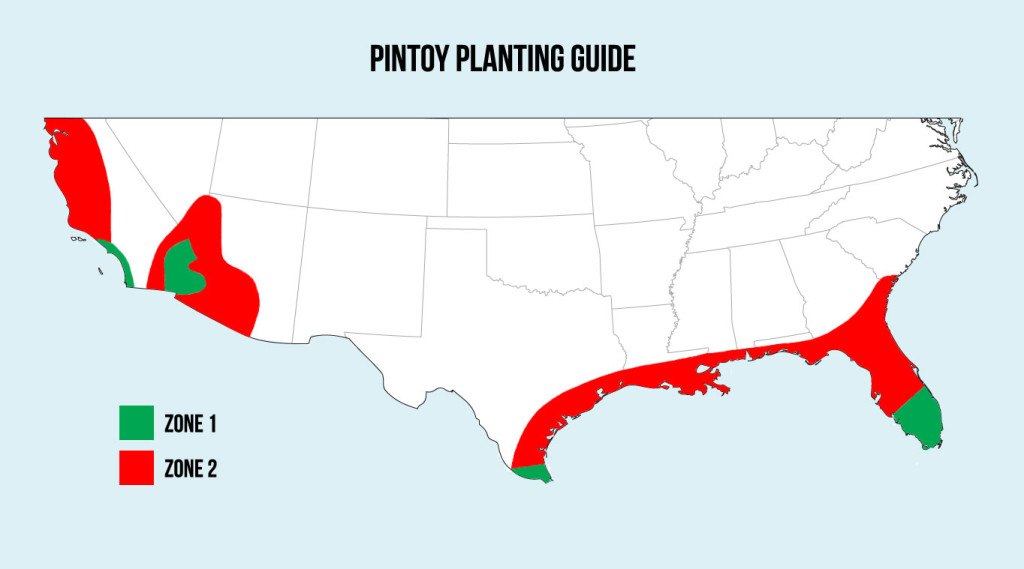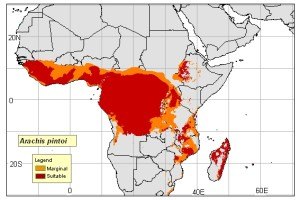Climate Requirements
PS144 is a tropical plant that will withstand high humidity and high temperatures. It forms a tap root that provides better drought tolerance than most lawn grasses. The plants will grow more slowly in cool weather and plants are easily damaged by frost. Plants that do not survive the winter will return in the spring in areas where winters are very mild, but the most prolific growth after frost will be in the spring as the seeds from the previous summer germinate. Seeds grow 2-4 inches underground and will survive only where freezing temperatures do not penetrate the soil to this depth.

PS144 will grow well in the summer even in northern latitudes, but the plants will not return the following season. PS144 will overwinter in planting Zone 1 and most years in planting Zone 2 as well. The actual performance will depend on local conditions and the exposure of the specific area planted. In the US, plantings should generally be limited to Florida, coastal areas of Gulf States, Coastal Southern Georgia, South Texas, Southern Arizona, low elevations of Southern California, and California Coastal regions to the Bay Area.
Soil Preference
PS144 prefers loose, deep soils, but adapts to most soil textures. The plants can tolerate soggy soils and occasional flooding while also tolerating more salt spray than most plants. Growth and appearance is best in neutral to acidic soils (pH 5-7.5) and growth and appearance is affected in high pH soils.
Planting Rates
The amount of seeds planted to an area will determine the time required for complete coverage of a given area and also the cost of the planting. Higher planting rates are recommended for landscaping and yards, but rates can be adjusted as preferred.
Landscaping: 4 seeds per Ft2 (4,000 seeds/1,000 Ft2 or 1.2 lbs./1,000 Ft2)
Plantation Groundcover: 8.5 lbs./acre planted (10 kgs/Hectare)
Pasture Seeding: 8.5 lbs./acre planted (10 kgs/Hectare)
Mowing
Mowing is not necessary, but PS144 may be mowed periodically to promote growth and increase flowering. Care must be taken not to mow too low and it is recommended to test a small area at a specific height before mowing an entire area.
Weed Control
Use of herbicides can be useful to control both broadleaf and grass weeds in Pintoy plantings. The need for weed control will diminish as the Perennial Peanut becomes dominant over time. Pintoy Seeds does not recommend specific herbicides, but this information is available in the publications listed in the Tech Info section.
Varieties
Pintoy Seeds is developing and testing multiple varieties with distinctive qualities and adaptation. The only commercial variety available today is PS144. The PS144 is an excellent variety for landscaping and grass replacement because it readily spreads, has a low growth habit (3-5 inches) and will not climb walls, trees or shrubs. It produces bright yellow flowers within weeks of emergence and it flowers continually during warm months. PS144 will grow in full sun but will also tolerate more shade than many lawn grasses, including St. Augustine. PS144 is a selection of the variety that was released as “Amarillo” and is very similar in performance and adaptation to Amarillo.
PS144 is very productive in pastures, either alone or together with grass, and has shown high tolerance and rapid recovery to heavy grazing. PS144 is not suitable for hay production because its low height impedes cutting and results in low dry matter yields. Pintoy Seeds is developing new varieties for hay to be launched in the future.
Fertilization Requirements
PS144 will develop best in soils with adequate sold fertilization and fertilizers with phosphorous are important for maintenance. If soil fertility is low or unknown, it is best to apply a balanced nitrogen, phosphorous and potassium fertilizer (such as 10-10-10) at time of planting.


